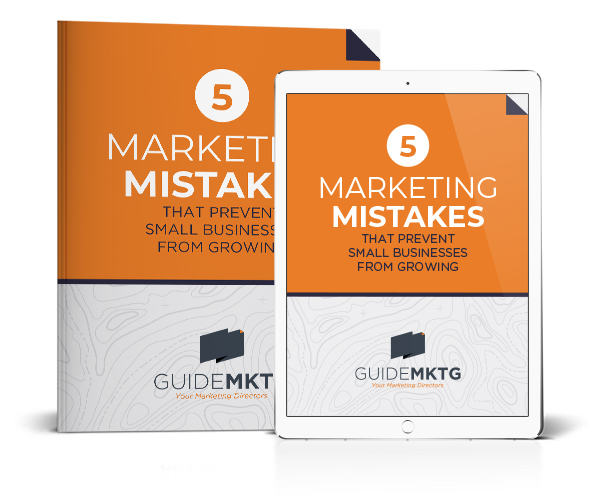Using Your BrandScript to Find Your
Target Audience
Your BrandScript can be an excellent tool to help you identify and definite your audience. You need to know your target audience to connect with them. If you’re too broad or not well-defined, you’re going to end up missing the people you actually want to reach.
Instead, consider creating a BrandScript for each audience. It’s more effective in reaching people than trying to force everyone into the same mold.

Define Your Target Audience
Define Your Target Audience
As you go through your BrandScript, remember, your audience is the main character. They’re the ones with the problem, and they’re searching for what you have to offer. Always create your BrandScript with your audience positioned as the hero.
In a BrandScript, you’re the guide, so be sure to come across that way on your website. Nurture and offer wisdom to help your audience along their journey to choose you and what you have to offer.

Develop Their Persona Keeping Your BrandScript in Mind
Define Your Target Audience
Once you have your audience defined, you need to create a persona. The persona should describe your ideal customer, their likes, wants, and any other characteristics about them that might be helpful. To get you started, we’ve got some jumping-off questions below.
What Are They Like?
Imagine your ideal customer and think about who they are. Are they affluent people? Are they middle class? Maybe they are business owners, or perhaps they’re interested in gaming. They might even be parents. Whoever your audience is, you need to think about who would fit precisely who you are looking to reach.
How Would You Describe Their Behavior?
Behavior makes a significant difference in your audience’s persona. If your persona is a CEO type, their behavior will be markedly different from a soccer mom’s behavior.
When you start to explore behavior, consider the way they respond to everyday obstacles. Are they calm and collected? Are they the type to get hot under the collar? What if they’re impulsive? Behavior is also tied to emotion, and most purchases are made from an emotional place, so if you can tap into it, you’ll reach your audience even more deeply.
What is Their Personality Like?
Think about what your ideal customer’s personality is like. Are they introverts? Extroverts? Are they eccentric? Expressive?
Narrow down the personality to fine-tune the niche of people you want to reach. The more you show you understand your audience, the more they’ll be attracted to your business.
What Are Their Life Circumstances?
Circumstances will vary between people, too, and include things like
- Mothers being stay-at-home-moms
- Two-parent families
- Single people
- People who date
- People with kids
- Financial struggles
- Two-car households
- Homeowners vs. renters
- Apartment dwellers
The list can go on and on, but the idea is to define your audience’s life circumstances in a way that is relevant to your business. If you’re trying to reach Dungeons & Dragons gamers, you’re probably not going to care if they’re single or not because it wouldn’t matter. Instead, you may identify life circumstances like people who make gaming a priority.

Define Your Target Audience
Develop Your Offer Around Your Target Audience Persona
After you define your persona, it’s time to develop your offer. What are you offering to your ideal customer? You’ve got to have an answer for that to effectively be able to reach them. To help you develop your offer, we’ve got some questions to get you thinking.
What Problem Do You Solve for Them?
Remember, you’re the guide who provides a thoughtful and meaningful suggestion that can solve whatever problem your persona is trying to solve. This means that as you develop your offer, you don’t want to surround it with flourishment that says, “Hey, look at me, we’ve got what you want,” in a way that won’t resonate with your customer.
Instead, you want to come at it from a different perspective. Let’s say your persona is a soccer mom, and your product is an insulated water bottle. You would approach them in a more meaningful way. Something like, “our insulated water bottles stay cold even during the hottest days at practice to keep your kids well-hydrated” is appealing and solves a problem for them without sounding desperate for attention.
Why Are You Different?
People want to know what makes you different. If you’re a restaurant that’s a locally-owned location, one of your selling points will likely be that you’re not a chain. Let’s imagine you’re running an Italian restaurant with your secret family recipes as the base of your menu, and your lineage goes back to the “Old Country,” a.k.a. Italy. All of those are things that make you different from the Olive Garden across town.
Think about what makes you and your business different from others like yours. Maybe you’re LGBTQ+ friendly, or perhaps you’re a woman-owned business. Don’t be afraid to make those differences known because they’ll help you stand out among the crowd, especially if those differences appeal to your ideal customer.
What Barriers Do They Face?
Every customer faces a barrier before deciding to take action and finally buy your product or service. Some are smaller than others, but it still takes identifying the obstacles so you can gently nudge them to help your customers overcome them.
For example, if you’re running a gluten-free bakery with a dedicated gluten-free facility, that overcomes a significant barrier for people with celiac disease. The other baker who bakes gluten-free offerings in the next neighborhood strip center may not be a dedicated facility, which means they’ll be more prone to cross-contamination. That’s a big deal for people with genuine medical issues, so helping them overcome that barrier will push the sale through.

The Bottom Line
Your BrandScript is an excellent tool to help you discover and define your audience. Identifying characteristics particular to your ideal customer allows you to create your persona to define your audience further. Put yourself in your customer’s shoes and try to see your offerings through their eyes as you answer questions about who they are, what they like, their personality, and behaviors. Consider life circumstances and barriers to develop a well-rounded persona for your target audience, and you can’t go wrong.
If you’d like some assistance in developing your target persona, you can also reach out to us here at Lantern Marketing. We can help you create your BrandScript or work with you to fill out your audience persona – all you have to do is schedule a call with us. We’re here to help when you’re ready!





